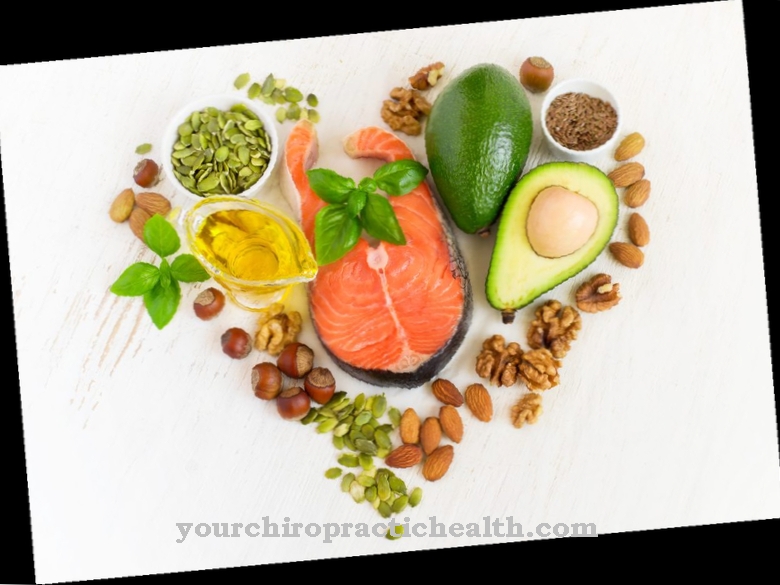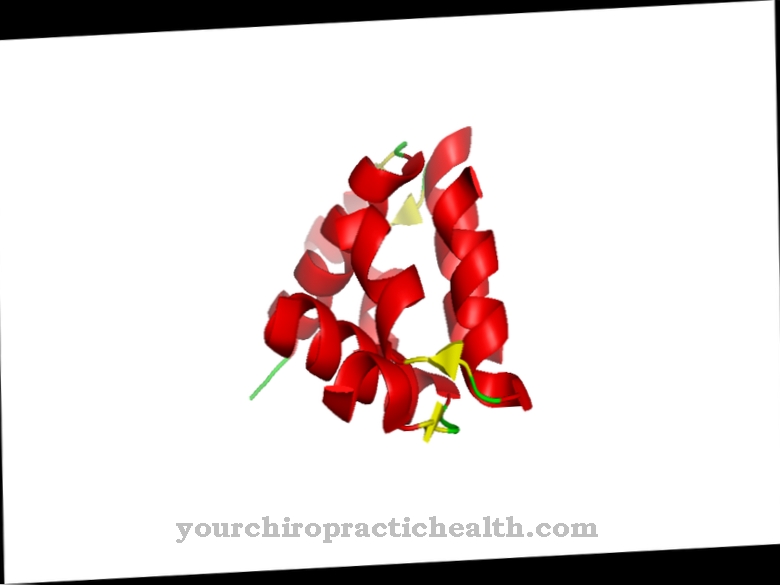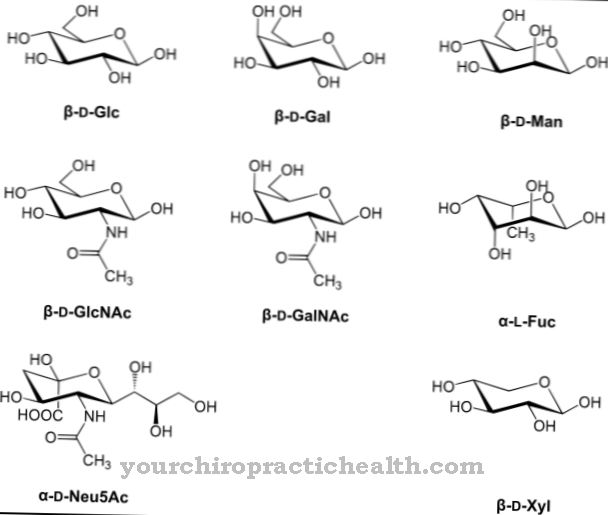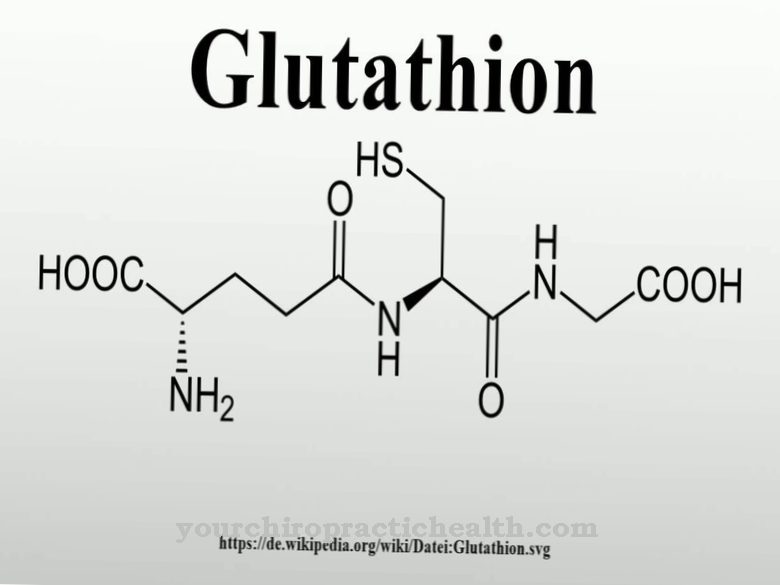Elastin is a structural protein that is involved in building up the connective tissue of the lungs, blood vessels and skin. In contrast to collagen, which is also found in connective tissue, it is very elastic. The elastin molecules network with one another in the extracellular area.
What is elastin?
All vertebrates contain the fiber protein elastin. It is a structural protein that is responsible for the shaping of such important organs as the lungs, blood vessels or skin. Together with collagen, it forms the connective tissue of these organs.
The properties of elastin and collagen complement each other. Elastin, as the name suggests, is very elastic in contrast to collagen. This makes the connective tissue of the skin, lungs and blood vessels elastic and malleable. The functions of these three organs require constant resizing. Elastin is mainly composed of the amino acids alanine, glycine, proline, valine, lysine, leucine and isoleucine. Hydrophobic and hydrophilic areas alternate within the molecule.
Characteristic units of the four amino acids alanine, proline, glycine and valine are repeated in each hydrophobic domain. The hydrophilic areas mainly have lysine. The lysine residue is oxidized to allysine by the enzyme lysyl oxidase. The terminal amino group is replaced by a carboxyl group. The lysine residues of the various protein chains combine with one another to form a ring-shaped desmosine and thus cross-link the different chains with one another.
Function, effect & tasks
As a structural protein within the connective tissue, elastin has the task of ensuring the shape and elasticity of the lungs, blood vessels and skin. All three organs are dependent on the flexibility of the connective tissue. They are subject to constant changes in volume.
As a structural protein, the connective tissue has mostly collagen. It is tear-resistant, but would be too rigid as a sole structural element. Only the combination of the properties of elastin and collagen allows the connective tissue to become elastic and at the same time tear-resistant. The basic building block of elastin is tropoelastin. Tropoelastin is composed of alternating hydrophobic and hydrophilic domains. It has an approximate molecular mass of 72 kilodaltons. The tropoelastine units network with one another at the lysine residues.
While tropoelastin is water-soluble due to its many hydrophilic domains, the water-solubility of the crosslinked polymer is negated. Tropoelastin is formed within the cells and reaches the extracellular area via membrane transport. This is where the networking of the basic building blocks takes place, with ring-shaped desmosine units being formed at the networking points. Three allysine residues and one lysine residue always take part in the formation of desmosine. Since allysine is an oxidation product of lysine, four lysine residues are ultimately linked to one another.
This form of connection gives the elastin its special elasticity. The cross-linking also protects elastin from denaturation and degradation by almost all proteases. However, the enzyme elastase is an exception. It is the only protease able to break down elastin. In this way, the elastins ingested through food are broken down.
Education, occurrence, properties & optimal values
As already mentioned, elastin is a necessary component of the connective tissue of the lungs, blood vessels and skin. This affects all vertebrates. The basic building block tropoelastin can hardly be detected in animal tissue. After the conversion of lysine residues to allysine by the lysyl oxidase, three allysine residues are immediately cross-linked with one lysine residue. Elastin occurs almost exclusively in its networked form.
Nevertheless, the detection of tropoelastin in animal experiments by inhibiting the synthesis of lysyl oxidase was successful. If this enzyme is missing, there is no conversion of lysine to allysine and thus also no elastin formation. Due to the resistance of elastin to the breakdown by proteases, the skin, lungs and blood vessels are ideally protected. The degradative effect of elastase is limited by elastase inhibitors.
Diseases & Disorders
Mutations in the ELN gene can cause hereditary diseases in which the structure of elastin is changed. In so-called dermatochalasis, there are changes in the connective tissue, which manifest themselves in inelastic, sagging skin that sags in folds.
The disease can be both acquired and hereditary. Familial clusters are observed. In addition to many other symptoms, this connective tissue weakness also occurs in Williams-Beuren syndrome. This is also a hereditary structural anomaly of elastin. The cause of this disease is a mutation on chromosome 7. Furthermore, there is also a congenital aortic stenosis, which is based on a disturbance in the structure of elastin. The main artery of the heart is narrowed. The blood flow from the left ventricle into the bloodstream is delayed.
Heart failure occurs in the long term. Five to six percent of all congenital heart defects are congenital aortic stenoses. Some forms of Ehlers-Danlos syndrome are also assumed to be elastin malformations. This disease is characterized by an overstretchable skin, which is called rubber skin. The weakness of connective tissue affects many organs, including the heart and digestive tract. The syndrome is usually inherited as an autosomal dominant trait.
In the so-called Menkes syndrome, in addition to many other symptoms, there is also a weakness of the connective tissue, the cause of which is to be found in impaired elastin synthesis. Actually, Menkes syndrome is characterized by a disruption in the absorption of copper in the body. However, copper is a cofactor for many enzymes. Among other things, this also includes lysyl oxidase. Without copper, the enzyme is ineffective. The conversion of the lysine residues into allysine no longer takes place. As a result, the crosslinking of the lysine residues to desmosine can no longer function.

























.jpg)


